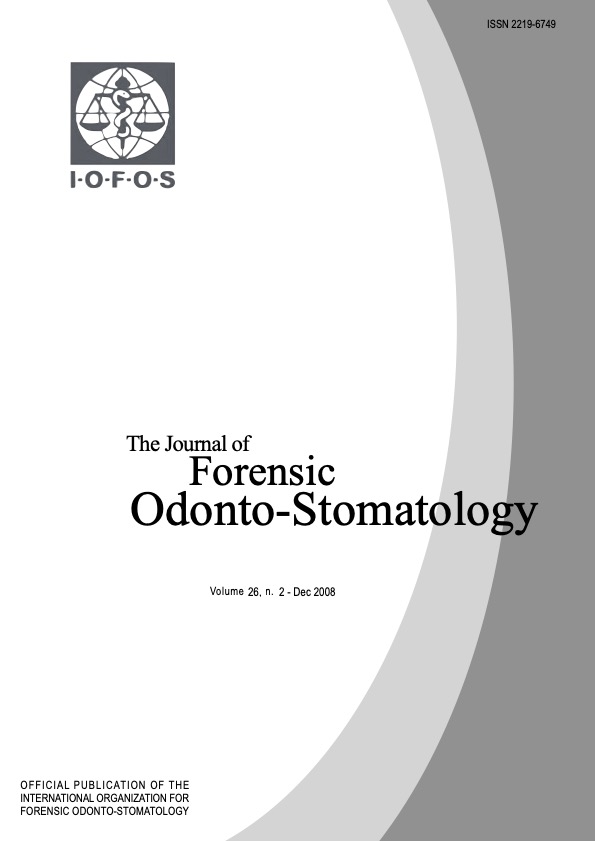Are dental indexes useful in sex assessment?
Abstract
This study describes sexual dimorphism in dental indexes derived from the permanent dentition. Three dental indices⎯‘crown area,’ ‘crown module’ and ‘crown index’⎯were calculated from the buccolingual (BL) and mesiodistal (MD) measurements of 123 permanent dentitions (58 females and 65 males) belonging to young Nepalese adults (age-range 19–28 years). Sex differences in the dental indexes were assessed using univariate and multivariate statistics and compared to that of linear measurements reported previously on the same sample. Univariate sex dimorphism exhibited by crown area and crown module was similar to that of linear measurements whereas crown index displayed marked variation. The unusual results shown by the latter is explained as the result of it not being a representation of tooth size per se; rather, crown index is an expression of the difference between BL and MD dimensions and may be better suited as an indicator of tooth ‘shape’. Stepwise discriminant analyses undertaken for the indices gave moderate to high accuracy rates in sexing (69.8–81.1%). However, this is lower to the classification accuracy reported for linear measurements. Therefore, it is concluded that dental indexes have no added utility in forensic sex assessment.

